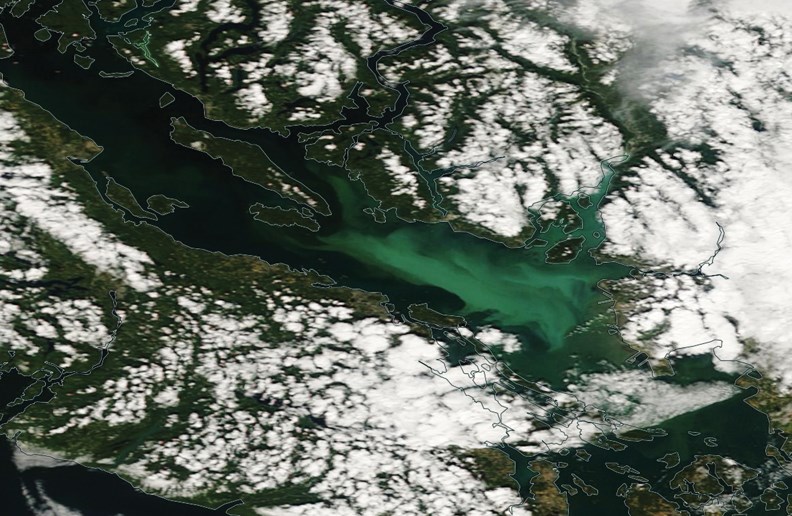People looking out over Howe Sound and the Strait of Georgia in the past few days have noticed much of the water seems to have a chalky green or turquoise colour.
Nicky Haigh, a researcher at Vancouver Island University’s (VIU) Nanaimo Campus, said the unusual colouration is appearing in many parts of the Salish Sea and it’s being caused by a phytoplankton, or algae, species called coccolithophorid.
There’s been some speculation that glacial runoff is responsible, but Haigh is convinced it’s algae.
She said blooms of this particular phytoplankton are more typical on the west coast of Vancouver Island, but rare for local waters. Similar blooms appeared near Sooke and in Puget Sound earlier this year.
Haigh can’t say for certain what’s causing it to happen, but the recent hot, dry weather is not a likely culprit. “I would say it’s more likely ocean acidification,” Haigh explained. “We have been seeing higher levels of [acidification] in the strait in the last couple of years … What people have been seeing is that with increased acidification they’re seeing more of certain coccolithophore species.”
Haigh also runs VIU’s Harmful Algae Monitoring Program, and she said coccolithophorid itself is not harmful, but other toxin-producing algae species sometimes coexist in the blooms. So far, though, she hasn’t seen evidence of those species. “We can’t say for sure if those species are there [but] what seems to be coexisting with the coccolithophorids in the southern Strait of Georgia right now is diatom species, which are not harmful.”
That chalky hue to the colour is from the calcium carbonate scales of the creatures, and Haigh says a “fun fact” is that England’s famous White Cliffs of Dover were created by coccolithophorid deposits.
Asked if there’s any way to predict how long the bloom might last, Haigh said, simply, “nope.” Adding with a laugh that there’s a saying in her line of work that “only a fool tries to predict the plankton.”
Rainy and windy weather patterns, however, often lead to the breakup of large algae blooms.



